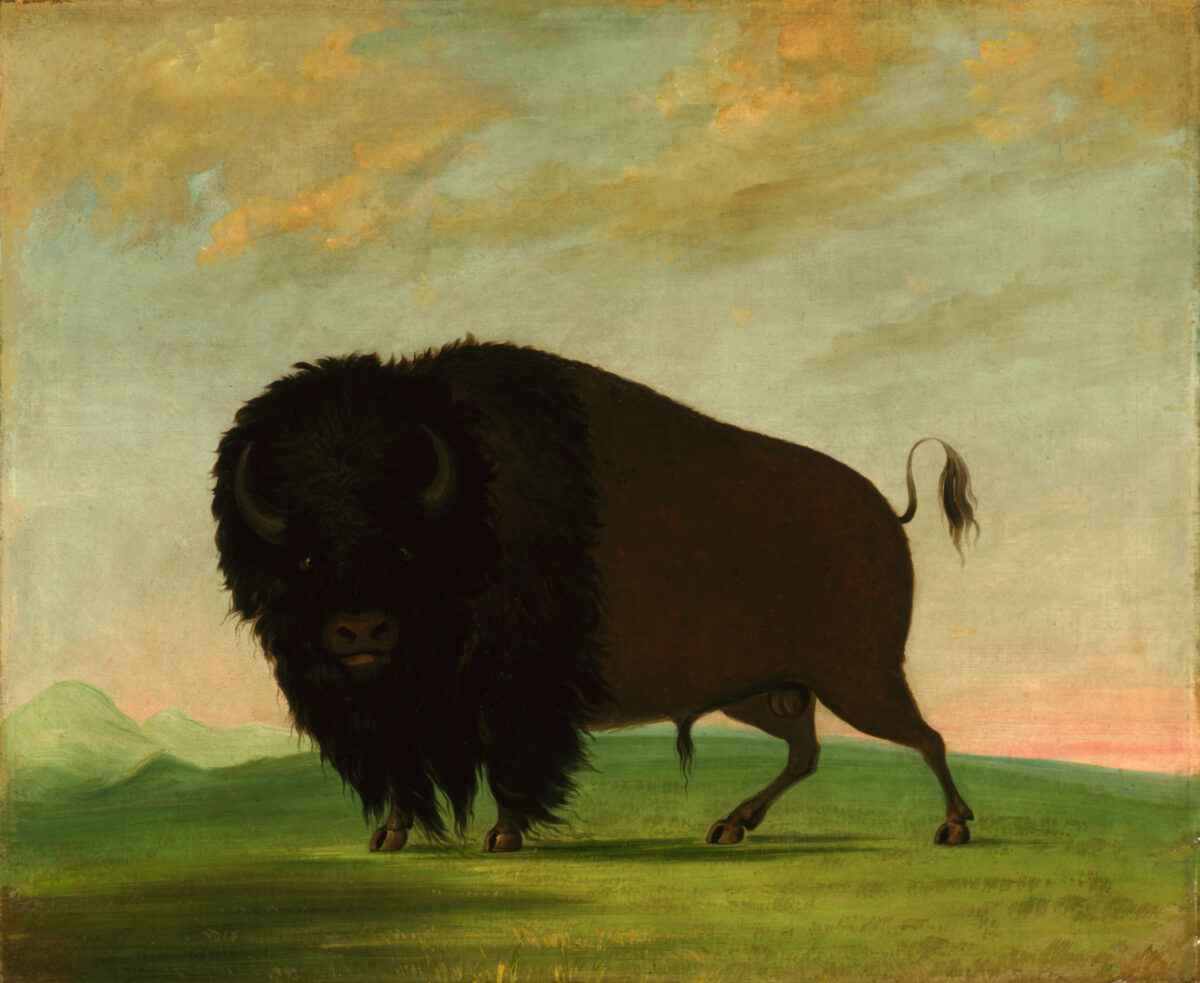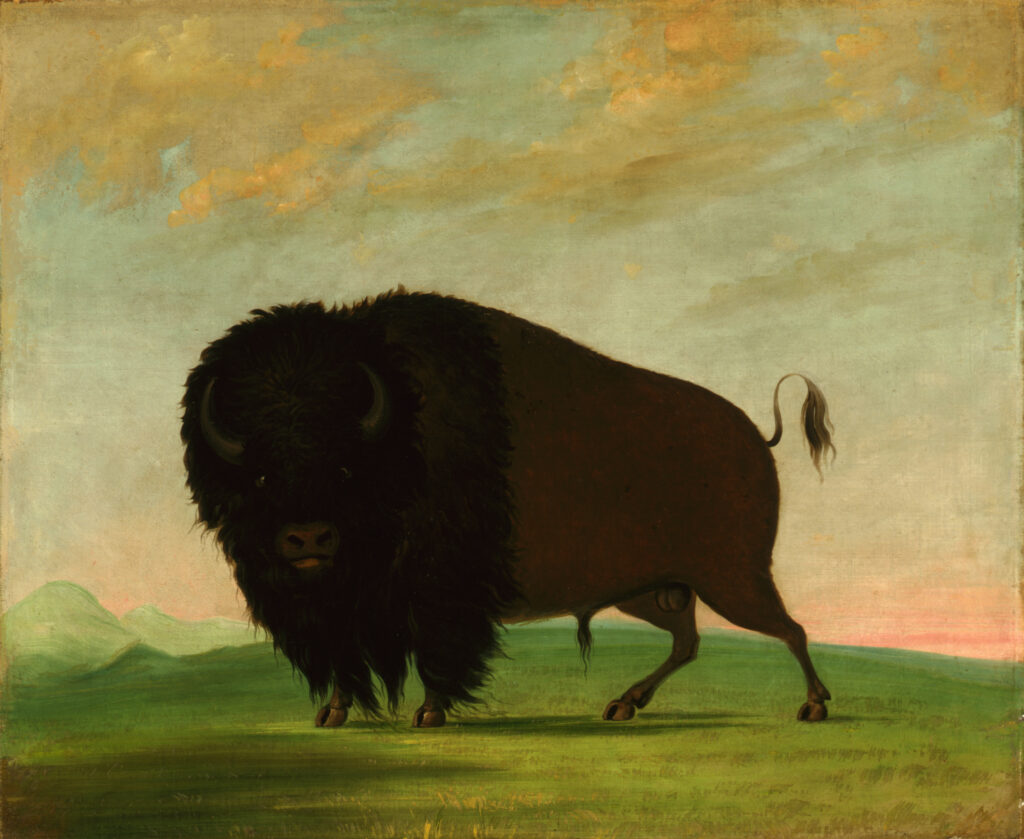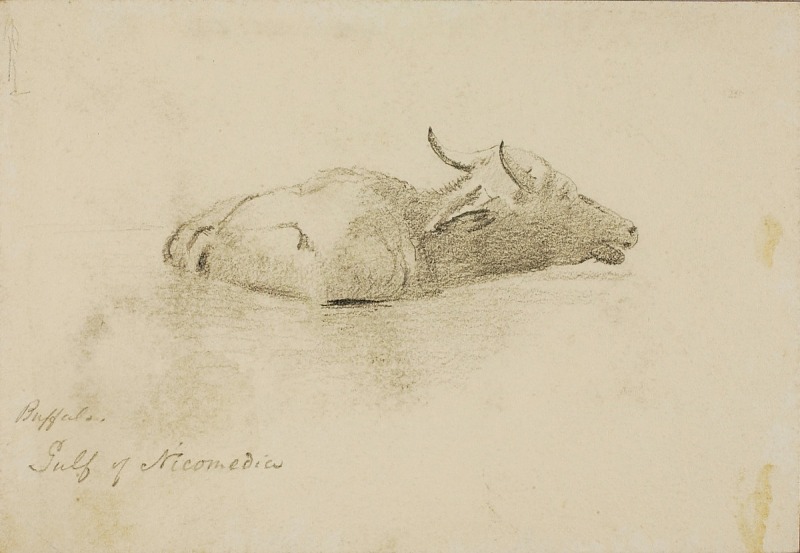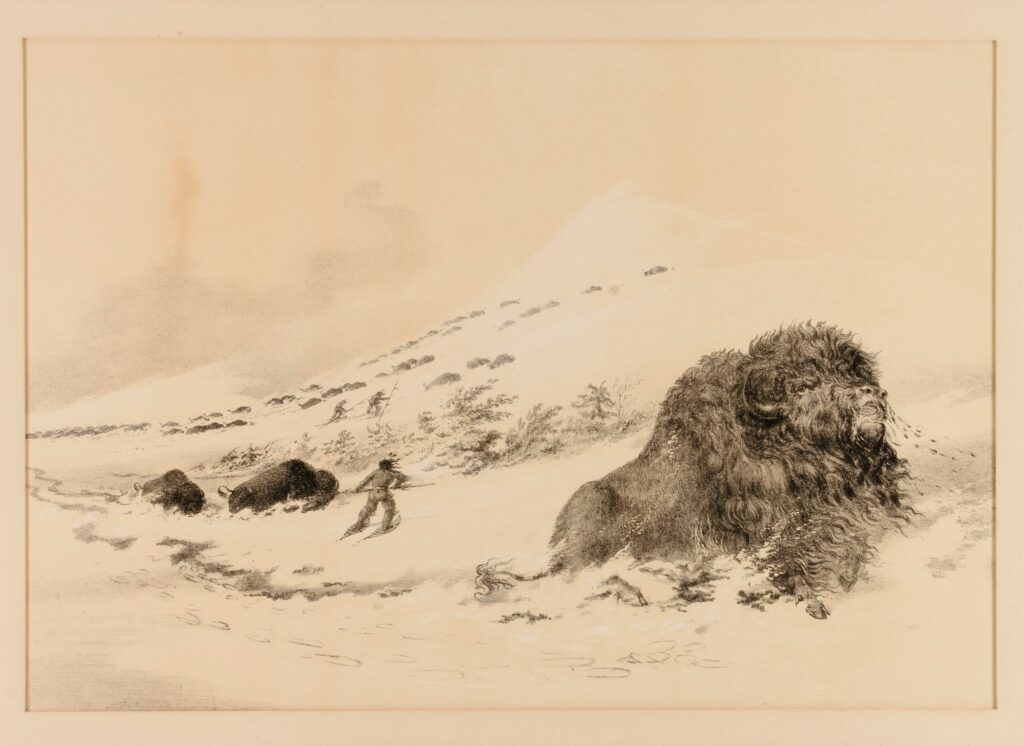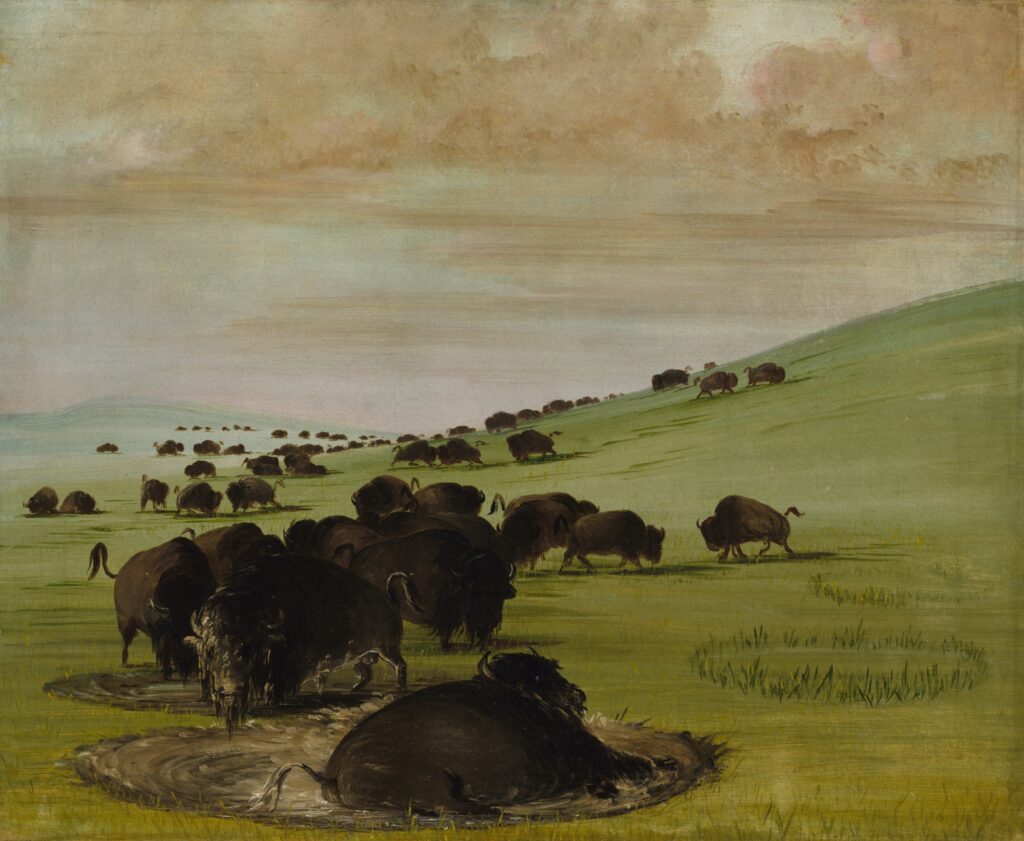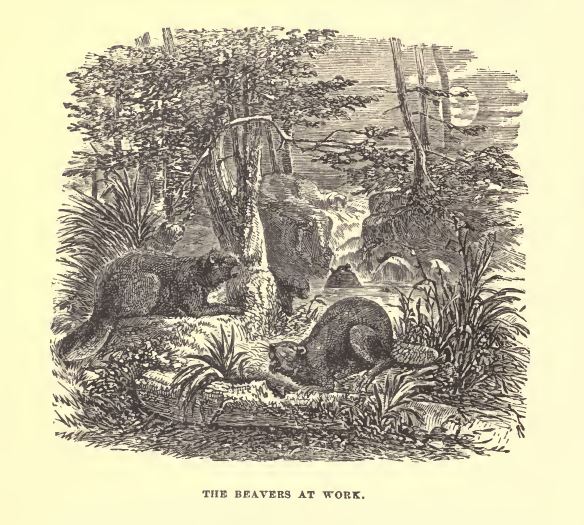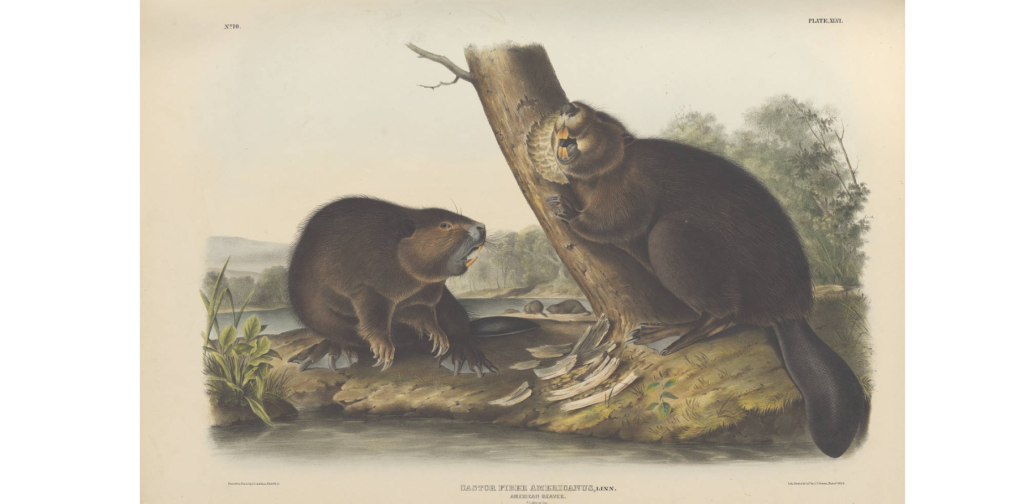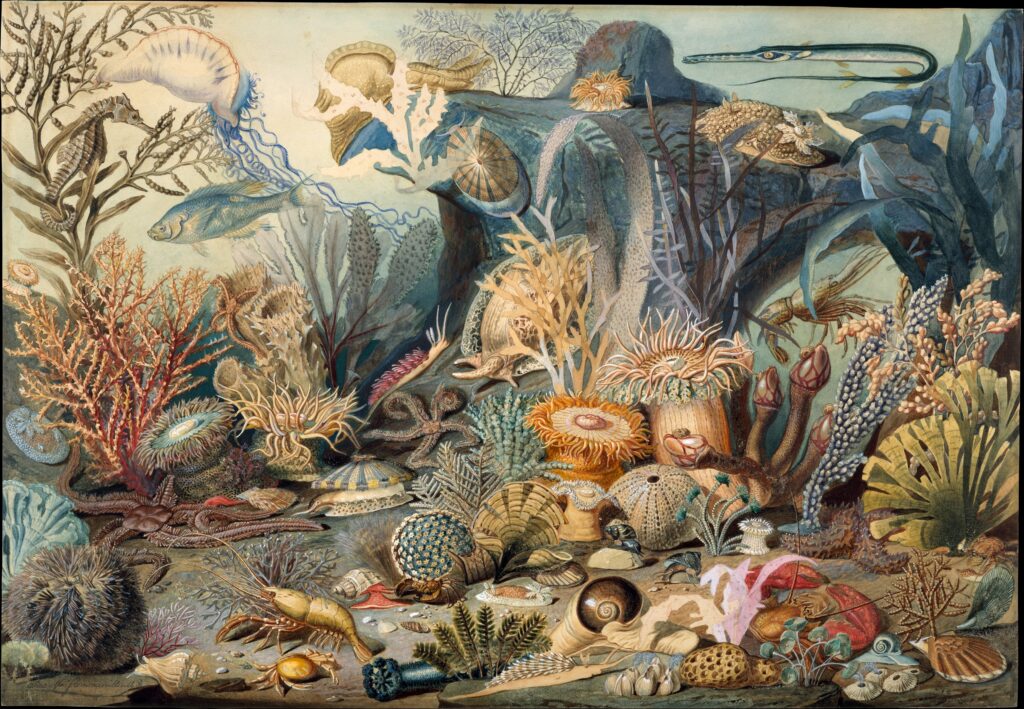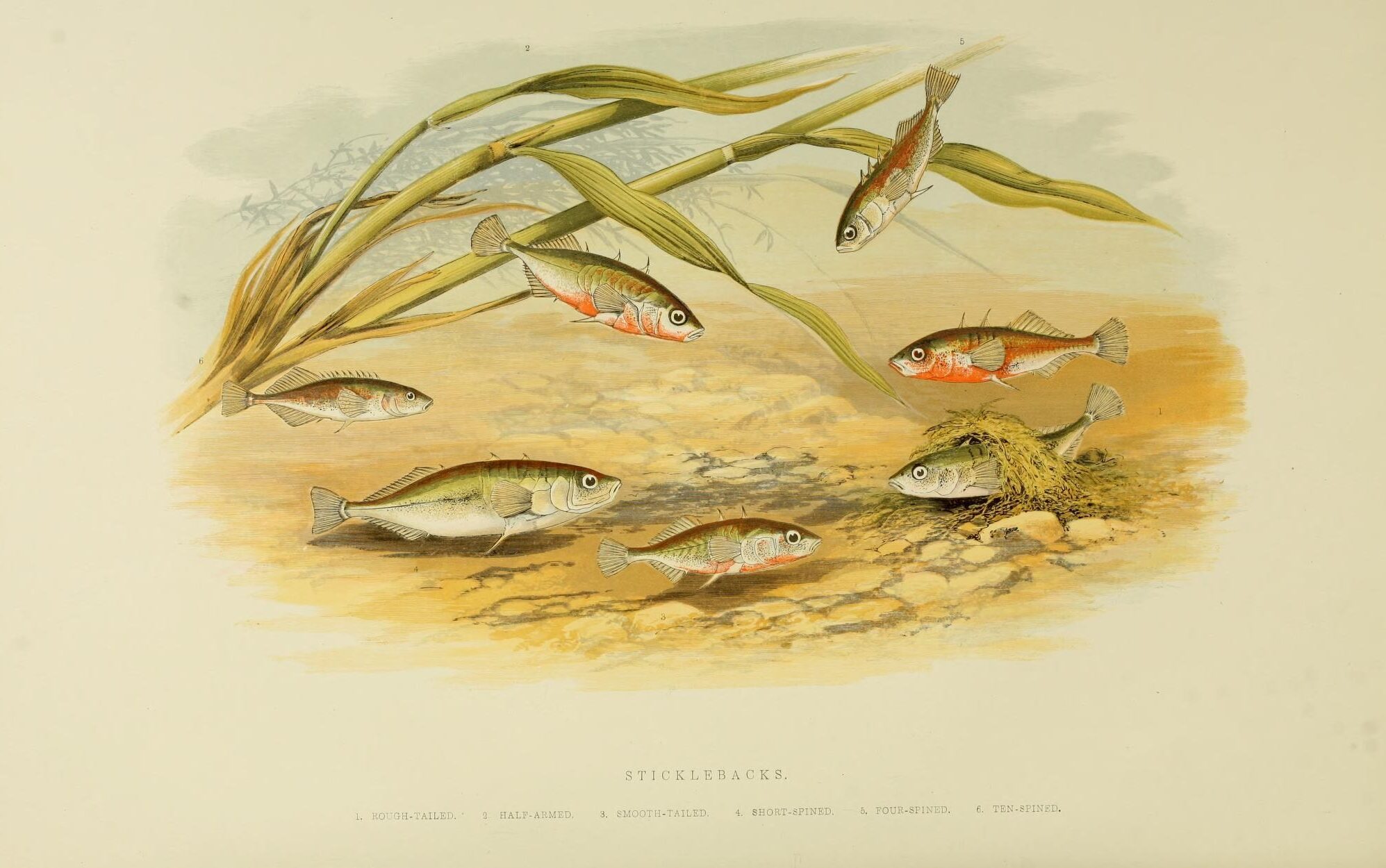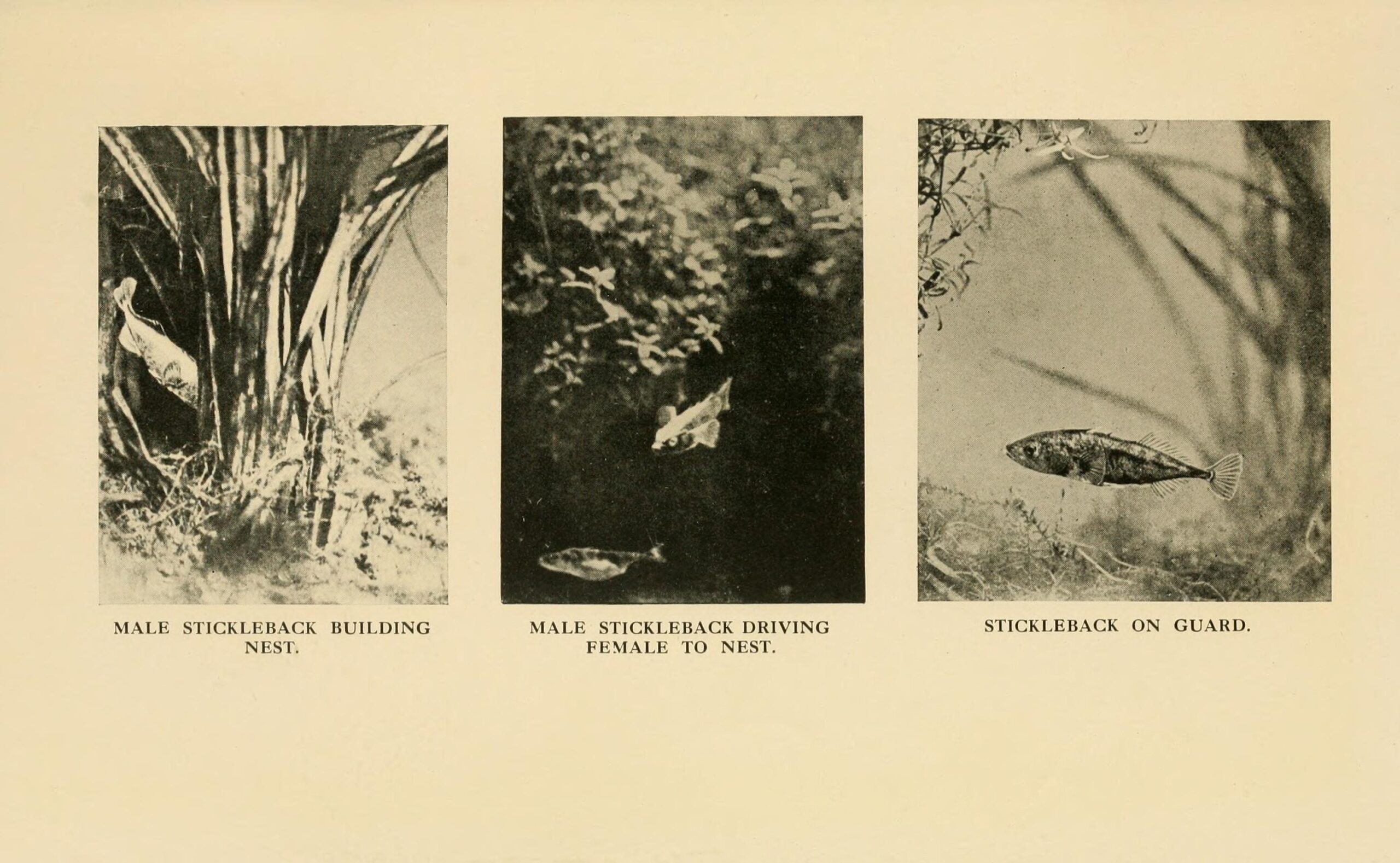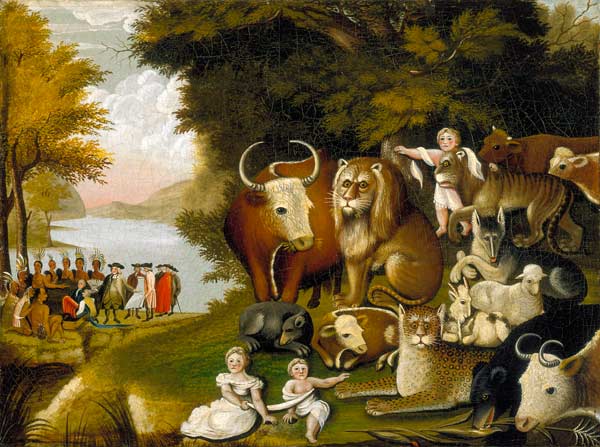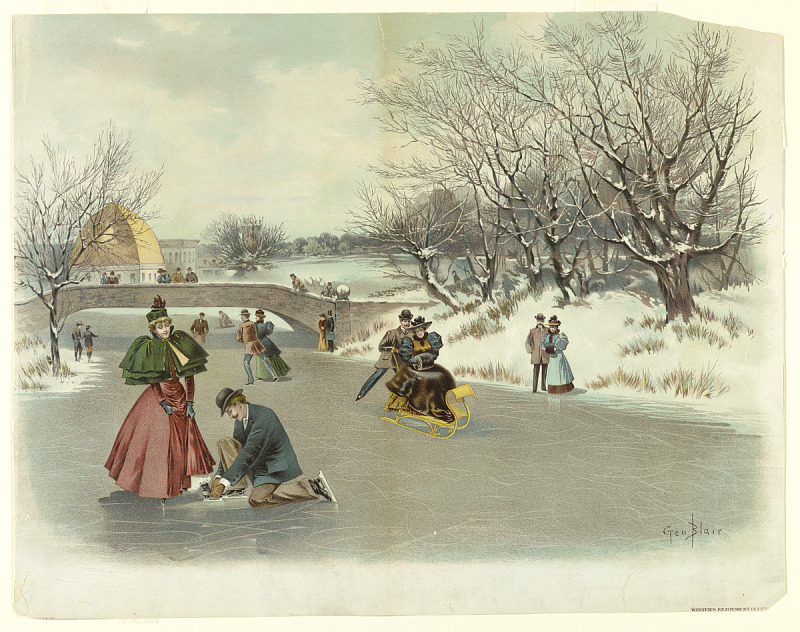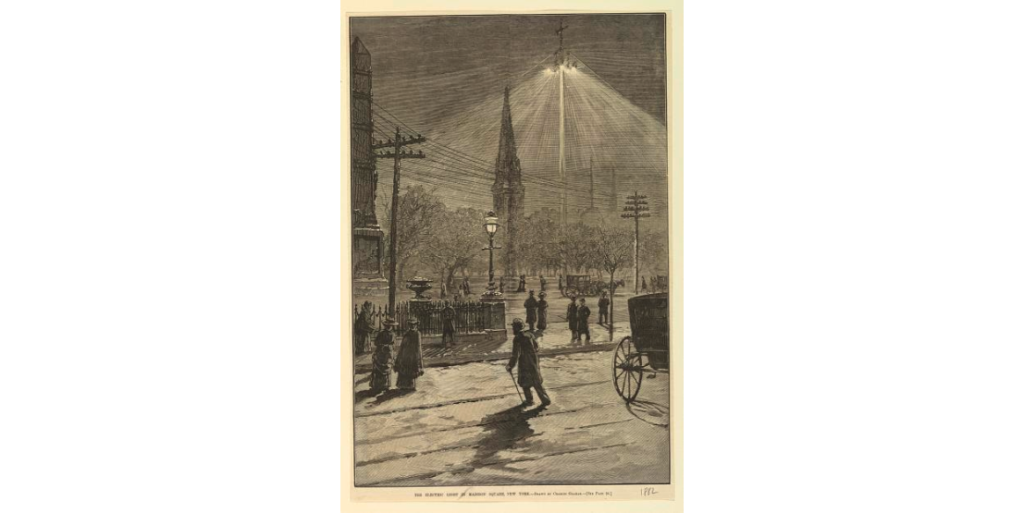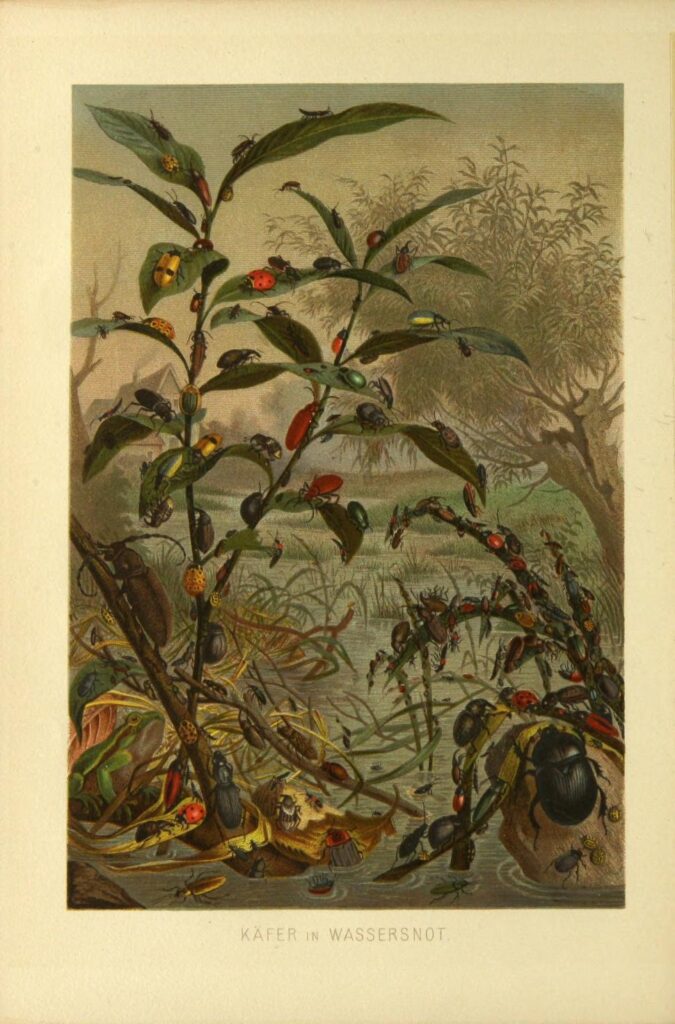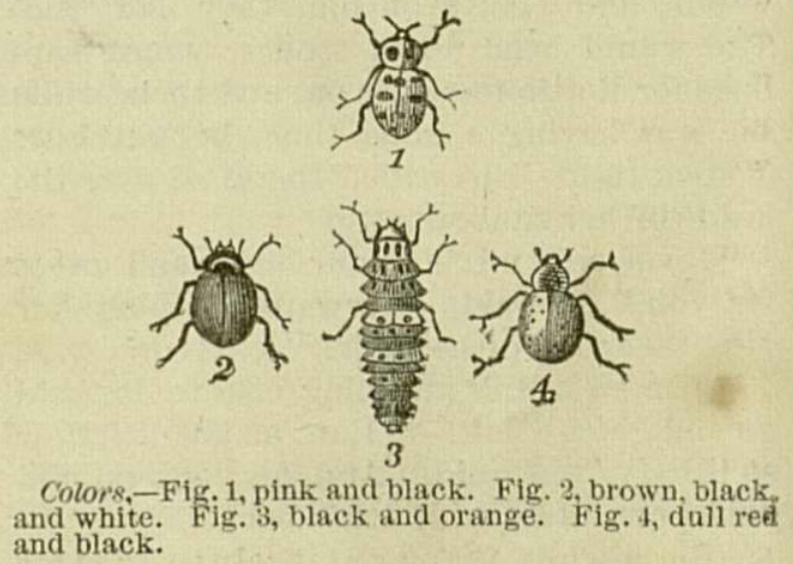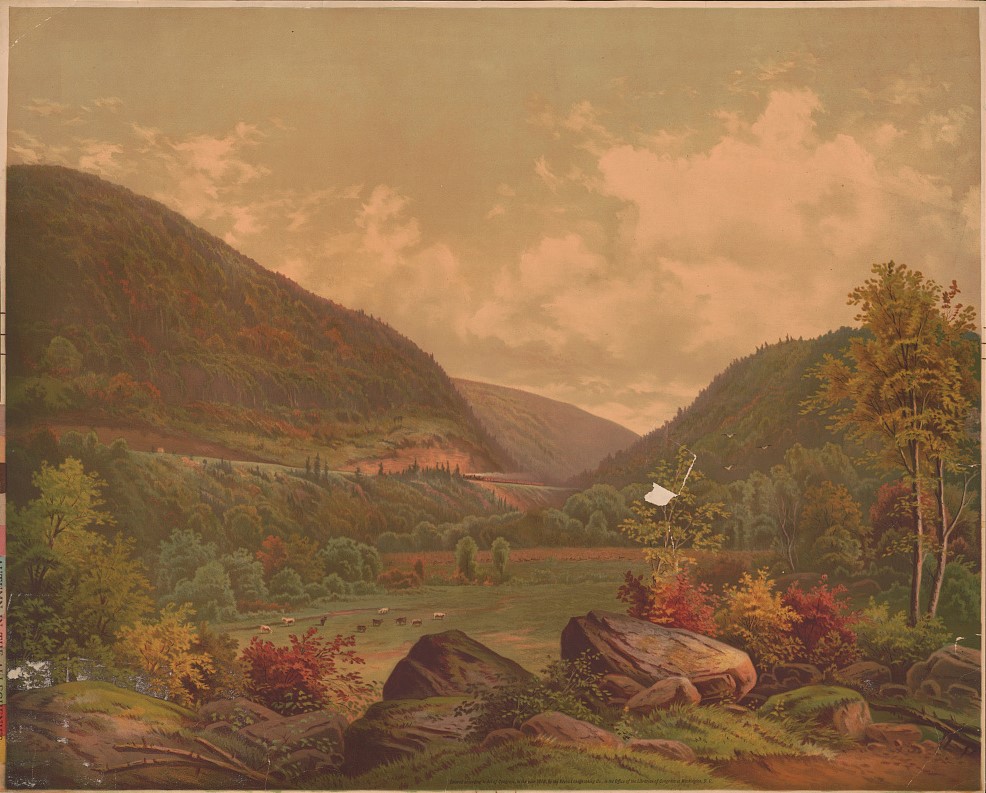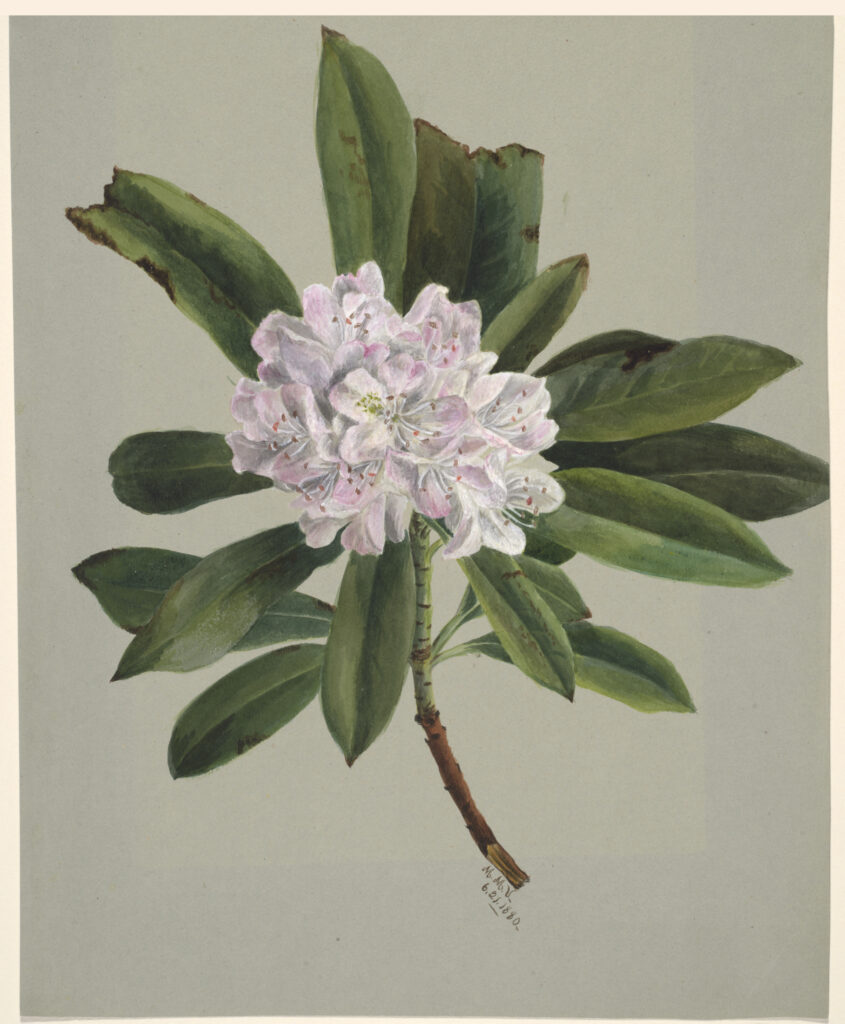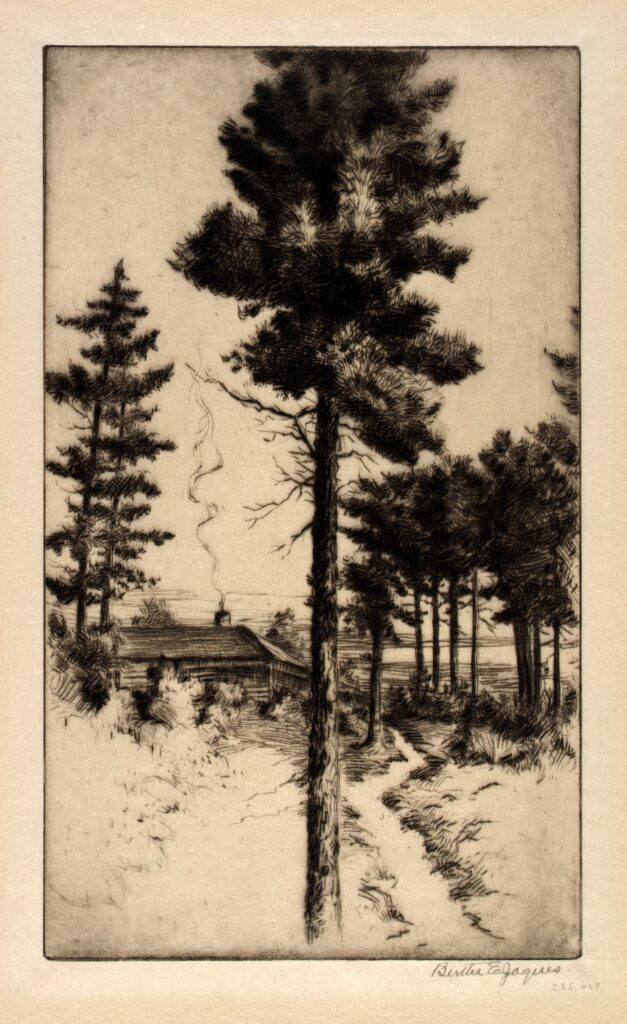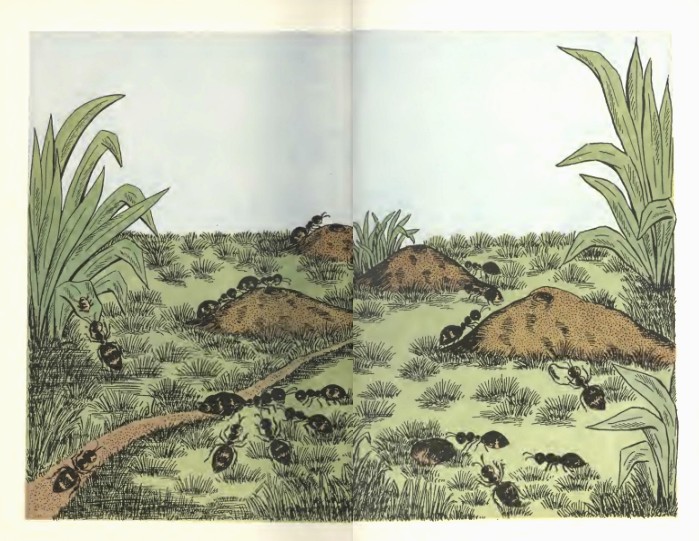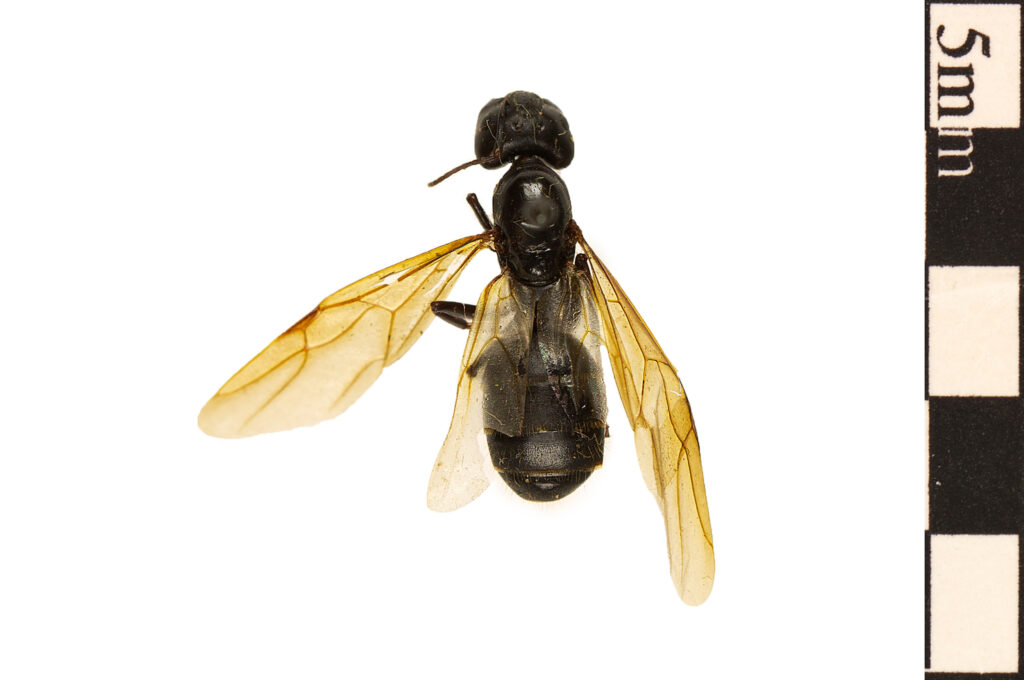The Four Seasons
By William Lear
Annotations by Karen Kilcup
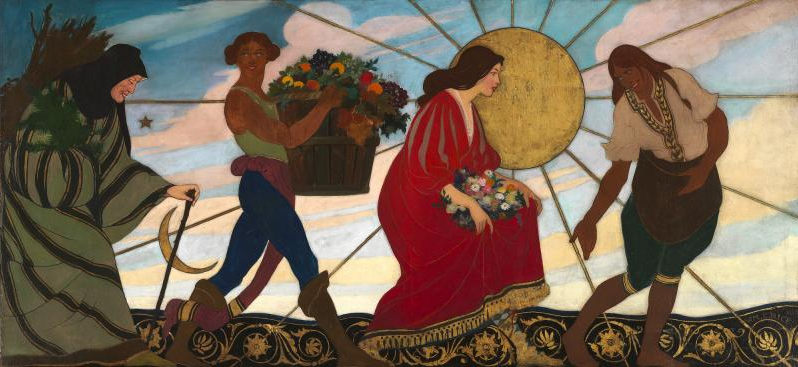
Spring is a very lovely season. Everybody delights to be out doors, to enjoy the pure air. In the fields some of the farmers are plowing, others are sowing their crops or preparing the ground for their vegetables. We see the birds in the trees flying about. They seem very happy, and are singing their sweetest songs. In the woods spring up beautiful wild flowers which we pick, some for our church, and others for our little oratory of St. Aloysius in our schoolroom.[1]
Then summer comes; it is the hottest of all the seasons. The berries are ripe and people, old and young, are picking them for their use. When it is very hot, no one likes to work outside in the sun, but the hay and grain must be cut and stored away. This is a very busy season for farmers.
After this we have autumn. The heat of the summer is gone, and we must now provide wood and fill up our sheds as much as we can, to keep us warm in the cold winter days, for we already feel the cold a little in the morning. Besides this we gather our vegetables and fruits, and keep them in a safe place, but sometimes the rats and mice have a good time with them.
Now comes the terrible and dreaded winter. How we like to have warm clothes, and fire is a precious thing. But there are many poor people who have no homes, and no fire to keep them warm. On the western coast of North America the winters are milder than on the eastern coast. We have snow in December and January. It does not stay long, but people make good use of it while it lasts.
Lear, William. “The Four Seasons.” The Youth’s Companion 6, no. 1 (November 1881): 143.
[1] St. Aloysius (1568-1591) was an Italian-born nobleman who relinquished his wealth to become a Jesuit priest in the Roman Catholic church. White religious leaders considered him to be an important spiritual model for students in the Tulalip Indian School.
Contexts
Begun in 1881, The Youth’s Companion—a name that many nineteenth-century publications shared—was a monthly student magazine that published articles written by pupils of the Catholic-run boarding school located on the Tulalip Indian Reservation. A federally recognized tribe located in the mid-Puget Sound area, the Tulalip Tribes received reservation lands—22,000 acres—in 1855, with its legal boundaries established by President Ulysses S. Grant in 1873. According to the Tulalip Tribes website, “it was created to provide a permanent home for the Snohomish, Snoqualmie, Skagit, Suiattle, Samish, and Stillaguamish Tribes and allied bands living in the region.”
Nineteenth-century Indian boarding schools aimed to assimilate Native Americans into white culture. They separated children from their families, required students to dress like white Americans, and prohibited them from speaking their language. They also emphasized so-called “industrial” training: boys learned agricultural and industrial skills, while girls learned how to cook, sew, and clean a household. Students were often expected to become servants or to provide manual labor help for whites.
Unlike many contributions to Native American student periodicals, this conversation was published with an author’s name. William Lear (Lummi) appears in the 1885-1940 Native American Census Rolls in 1901, when he was thirty-six, so he would have been about fifteen when he composed “The Four Seasons.” He was the father of thirteen-year-old Clara and fifteen-year-old Florance, who are listed in 1910 school census. Students living on reservations during this time often received educations governed by white religious authorities who emphasized moral training. In describing the seasons, this story mirrors much of the nineteenth century’s natural history writing for children. The sketch of winter veers from convention, focusing on the region’s poverty and ending with a hint of pleasure.
Resources for Further Study
- Kalliber, Kim, “Seattle Continues Healing ‘Deep Wounds’ With Boarding School Resolution,” Tulalip News, October 20, 2015.
- King, Marsha. “Tribes confront painful legacy of Indian boarding schools,” Seattle Times,February 3, 2008.
- Marr, Carolyn J. “Assimilation Through Education: Indian Boarding Schools in the Pacific Northwest,” University of Washington Libraries Digital Collection. This article includes historical contexts and features “A Typical Daily Schedule.”
- ———. “Between Two Worlds: Experiences at the Tulalip Indian Boarding School, 1905-1932,” Hibulb Cultural Center & Natural History Preserve.
Contemporary Connections
“Tulalip History Minute 04—The Tulalip Indian School presented by Mary Jane Topash,” the Tulalip History Project. Provides Tulalip-sponsored background on the tribe.
“Editorial: Getting to the truth of Tulalip boarding school,” September 26, 2021, HeraldNet (Everett, Washington). Caution: includes information about abuses at the school.
urrent significance.
